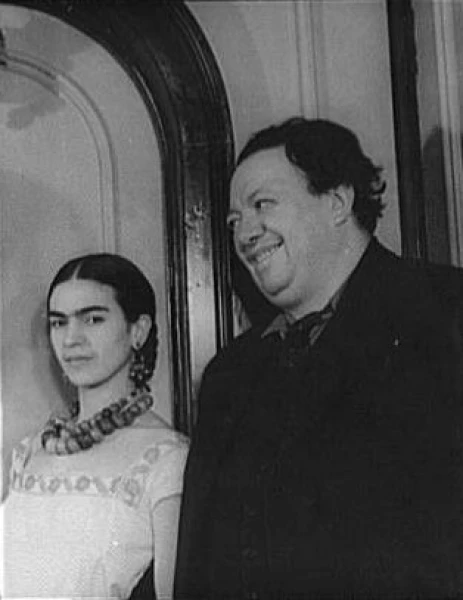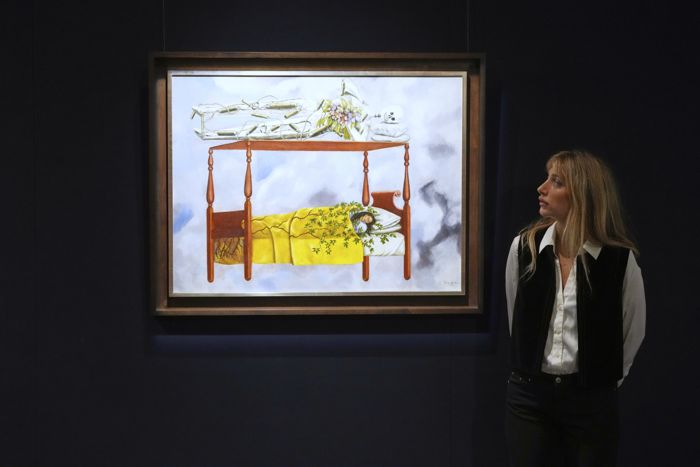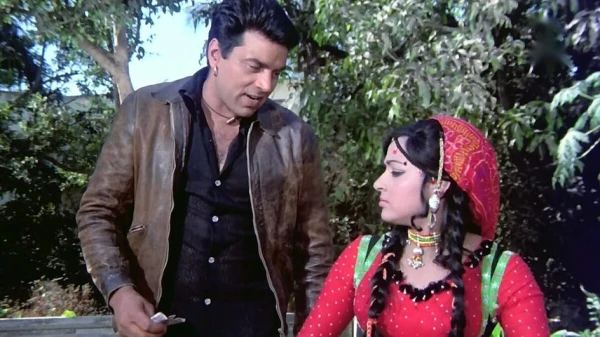
She was born along with the Mexican Revolution.
The work of Mexican artist Frida Kahlo, "The Dream (The Bed)," was sold at a Sotheby's auction in New York for $54.7 million.
Thus, it became the most expensive painting by a female artist ever sold at auction, writes The Wall Street Journal. Previously, this record belonged to the work of American artist Georgia O'Keeffe, "Jimson Weed/White Flower No. 1," which was purchased 11 years ago by Alice Walton, daughter of Walmart Inc. founder, for $44.4 million.
The work "The Dream (The Bed)" was created by Kahlo in 1940. It depicts Frida herself sleeping in a bed suspended against the sky, entwined with vines, while above her is a skeleton with flowers wrapped in dynamite.

The painting also became the most expensive work of art by a Latin American author, breaking the record of another self-portrait by Kahlo, "Diego and I," painted in 1949. This work, which shows the artist with a tiny portrait of her husband Diego Rivera placed on her forehead, was sold in 2021 for $34.9 million.
Frida Kahlo de Rivera (July 6, 1907, Coyoacán – July 13, 1954, Mexico City) was a Mexican artist best known for her self-portraits. Mexican culture and the art of pre-Columbian peoples significantly influenced her work. Frida Kahlo's artistic style is sometimes characterized as naive art or folk art. The founder of surrealism, André Breton, included her among the surrealists.
Throughout her life, she had poor health—at six years old, she contracted polio, the effects of which remained with her forever, and at eighteen, she was involved in a serious car accident, after which she underwent numerous surgeries that affected her entire life. In 1929, she married artist Diego Rivera; in addition to their shared interests, they were united by their support for the Communist Party.
The house in Coyoacán was built three years before Frida's birth—in 1904 on a small plot of land. The thick outer walls, flat roof, single living floor, and layout that kept the rooms cool and opened into an inner courtyard are almost a model of colonial-style houses. It stood just a few blocks from the central city square. From the outside, the house at the corner of Londres Street and Allende Street looked just like others in Coyoacán, an old residential area in the southwest suburbs of Mexico City. For 30 years, the appearance of the house did not change. But Diego and Frida made it what we know it as today: a house predominantly painted blue with festive tall windows, decorated in traditional indigenous style, a house full of passion.
The entrance to the house is guarded by two giant sculptural representations of Judas, their twenty-foot tall papier-mâché figures making gestures as if inviting each other to converse.
Inside, Frida's palettes and brushes lie on the work desk as if she just left them there. By Diego Rivera's bed lies a hat, his work robe, and huge boots. In the large corner bedroom, there is a glass display case. Above it, it reads: "Here on July 7, 1910, Frida Kahlo was born." The inscription appeared four years after the artist's death when her house became a museum. This inscription is inaccurate. As shown by Frida's birth certificate, she was born on July 6, 1907. But she decided that she was born not in 1907, but in 1910, the year the Mexican Revolution began. Since she was a child during the revolutionary decade and lived amidst the chaos and blood-soaked streets of Mexico City, she decided she was born along with this revolution.
The bright blue and red walls of the courtyard are adorned with another inscription: "Frida and Diego lived in this house from 1929 to 1954." It reflects a sentimental, idealized view of marriage, which again diverges from reality. Before Diego and Frida's trip to the U.S., where they spent four years (until 1934), they lived in this house for a very short time. From 1934 to 1939, they lived in two houses built specifically for them in the San Ángel neighborhood. Then followed long periods when, preferring to live independently in a studio in San Ángel, Diego did not live with Frida at all, not to mention the year when both Riveras separated, divorced, and remarried. Both inscriptions embellished reality. Like the museum itself, they are part of the legend of Frida.
<iframe width="560" height="315" src="https://www.youtube.com/embed/Pv7-8ZchB0Q?si=S7-Xj9W2AcQMGglk" title="YouTube video player" frameborder="0" allow="accelerometer; autoplay; clipboard-write; encrypted-media; gyroscope; picture-in-picture; web-share" referrerpolicy="strict-origin-when-cross-origin" allowfullscreen></iframe>












